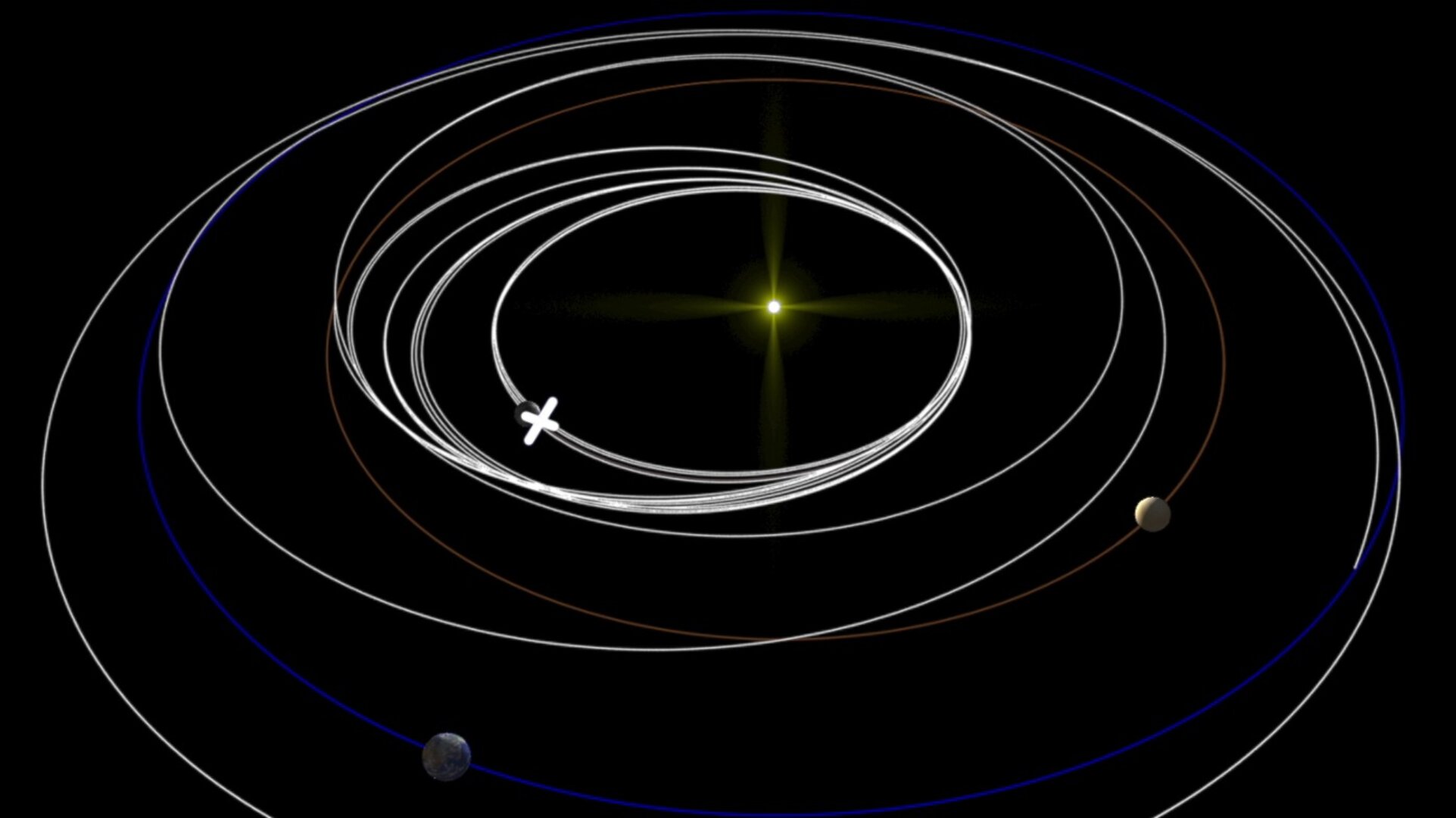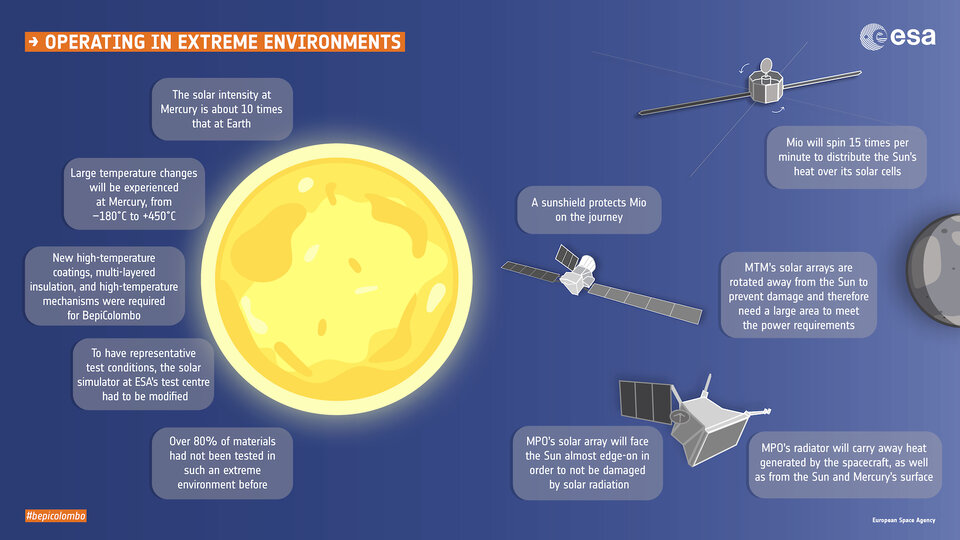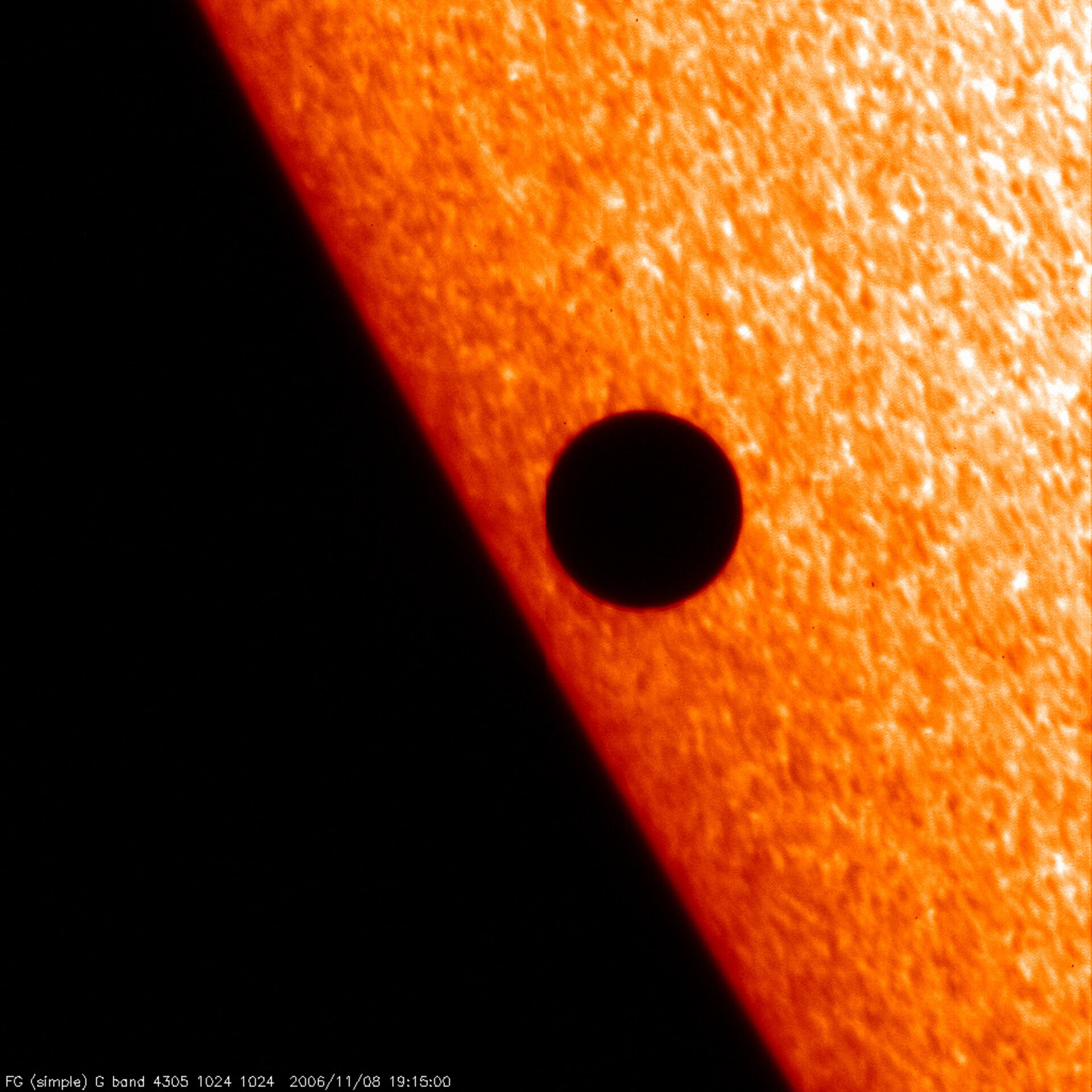Three reasons why we know so little about Mercury
Mercury is the least explored of the four rocky planets of the inner Solar System. It took until 2011 for the first spacecraft, NASA’s probe MESSENGER, to enter into orbit around the planet. In comparison Jupiter, roughly five times more distant from Earth, welcomed its first orbiter already in the 1990s. Mercury is also notoriously difficult to observe from Earth. Here we present three most significant obstacles in the exploration of Mercury.
1. Difficult to observe
Out of the five planets known since ancient times as the ‘wandering stars’, Mercury is the one least explored. Unlike Venus, Mars, Jupiter and Saturn, Mercury is notoriously difficult to observe from Earth. Being the innermost planet of the Solar System, it always appears too close to the Sun. While the golden time for astronomical observations is at night, Mercury sets and rises in the sky nearly together with the Sun. That means it can be spotted only briefly shortly before sunrise and just after sunset, and always appears close to the horizon.
Although the planet can be observed with telescopes during daytime, astronomers need to take extra precautions since the intense sunlight and the constant proximity of the Sun could damage the optics. Larger telescopes are frequently not allowed to look in the direction of the Sun at all because of the damage they could sustain.
Interestingly, one of the most powerful astronomical observatories to date, the legendary NASA/ESA Hubble Space Telescope, never imaged Mercury. Orbiting Earth at the altitude of about 550 km, Hubble observed some very distant celestial objects, such as the blue supergiant star nicknamed Icarus, some 14 billion light-years away. It has, however, never looked at Mercury out of concerns about damaging its sensitive optics.
2. Hard to reach


Access the video
Although NASA’s Mariner 10 flew past Mercury three times in the early 1970s while orbiting the Sun, it took until 2011 for the first mission ever, NASA’s MESSENGER, to enter into orbit directly around Mercury.
In comparison, Mars received its first orbiter in 1971 and Venus in 1975. Jupiter, at its closest nearly 630 million kilometres away from Earth compared to Mercury’s average 77 million kilometres, welcomed its first orbiter in 1995. Even the more distant Saturn preceded Mercury with the Cassini mission, a joint project by NASA, ESA and the Italian Space Agency, by seven years.
Why is Mercury so little studied? After the three brief Mariner 10 flybys in 1973 and 1974, nothing happened in the exploration of the innermost planet of the Solar System for nearly four decades. Surprisingly, despite being much closer to Earth than Jupiter and Saturn, Mercury is actually more difficult to reach. According to some estimates, it would take less energy to get to the dwarf planet Pluto than it takes to get to Mercury. The reason for that is Mercury’s closeness to the Sun. A spacecraft aiming to not only fly past Mercury while in orbit around the Sun but to enter into orbit around the planet directly, has to constantly brake against the gravitational pull of the star.
“There are two ways how to accomplish this braking,” says Johannes Benkhoff, ESA’s Project Scientist for the BepiColombo mission. “You either need a huge spacecraft that carries a lot of fuel, or you can use the gravity of other planets to slow you down along the way. To reach Mercury, you need to perform multiple such planetary flybys and so the journey takes a long time.”
It takes less than two years to ESA’s Sun-explorer Solar Orbiter to reach its target orbit around the Sun, which is even closer to our parent star than Mercury. BepiColombo, surprisingly, needs seven years to put itself in the right position to place its two orbiters, ESA’s Mercury Planetary Orbiter (MPO) and the Mercury Magnetospheric Orbiter of the Japan Aerospace Exploration Agency (JAXA), into the right orbits around Mercury. To get there, the spacecraft has to perform an overall nine gravity-assist manoeuvres, or flybys, that will help it brake and adjust its trajectory.
Among the pioneers studying the use of planetary flybys to correct trajectories of space missions was Italian engineer Giuseppe (Bepi) Colombo. It was Bepi Colombo who proposed to optimise the path of Mariner 10 by performing a flyby at Venus to eventually achieve overall three flybys of Mercury instead of the originally planned one. It is his name that the present European-Japanese Mercury mission BepiColombo carries.
“We obtain most of the energy to get to Mercury from the flybys,” says Johannes. “We use our fuel mainly to get the flyby right, to bring the spacecraft into the correct position when we fly past a planet in order to get maximum energy out of it in order to brake and go in the right direction to the Sun.”
3. Too hot to orbit up close

The closest NASA’s Mariner 10 got to the surface of Mercury during one of its three brief encounters was 327 km. The MESSENGER spacecraft orbited Mercury between 2011 and 2015 on an elliptical orbit that somewhat changed over the years. The closest point of the orbit got to about 200 km from Mercury’s surface while the farthest shifted from the initial 15 200 km to approximately 9000 km towards the end of its mission.
ESA’s Mercury Planetary Orbiter (MPO), one of the two orbiters comprising the BepiColombo mission, will follow a much tighter orbit around Mercury with the nearest point at the initial distance of 480 km from the surface and the farthest at only 1500 km. Over time the orbit of BepiColombo will change and the nearest point to the surface will move down to about 200 km before it raises again.
Even though both, Mariner 10 and MESSENGER, may have briefly made closer approaches, they didn’t never stay in the scorching heat near Mercury continuously. As a result, neither mission obtained high resolution data over the entire surface of the planet, something BepiColombo should fix.
The ambitious plans that European scientists have for BepiColombo stretched the engineering teams of ESA and its collaborators to their limits.
Daniele Stramaccioni, ESA’s BepiColombo system engineer, compared the situation that BepiColombo will face to sticking a working laptop inside a hot pizza oven.
“BepiColombo is a mission like no other,” he says. “Some 80% of its equipment had to be developed from scratch. Without widespread innovation it would never have flown.”
At the time of its development, BepiColombo was set to face a harsher environment than any ESA mission before.
Not only is sunlight around Mercury about 10 times more intense than near Earth, the planet’s scorched surface also radiates heat back to space. As a result, MPO will have to endure temperatures of up to 450°C, hot enough to melt lead.
Materials used in standard space missions are not capable of withstanding such high temperatures. For example standard solar arrays start falling apart at 140°C. The engineers therefore had to find completely new materials for the job. A carbon fibre reinforced polymer enabled stretching the workable temperature of the solar panels to over 200°C, but the arrays still need to be tilted at up to 70 degrees to reduce sun exposure.
Solar panel technology was one of the make-or-break issues for the mission, and setbacks in its development brought the project at one point to the brink of cancellation.
The MPO is also fitted with a complex system of cooling pipes that transport heat from within the spacecraft to radiators attached to its shaded side. These radiators, together with dozens of layers of space insulation, keep the MPOs interior within room temperature, which is important for the spacecraft’s sensitive instruments. The insulation blankets, consisting of titanium, aluminium and ceramic fabric, add up to 94 kg to the mass of the spacecraft.
Not only will BepiColombo face extreme heat, on the night side of Mercury temperatures can drop to as low as 180°C, putting the materials under further stress.
During the development, ESA had to make changes to its testing facilities at the European Space Research and Technology Centre (ESTEC) in the Netherlands, to accommodate the challenging mission.
Read more about the technical challenges involved in designing the BepiColombo mission in Hot stuff: the making of BepiColombo


